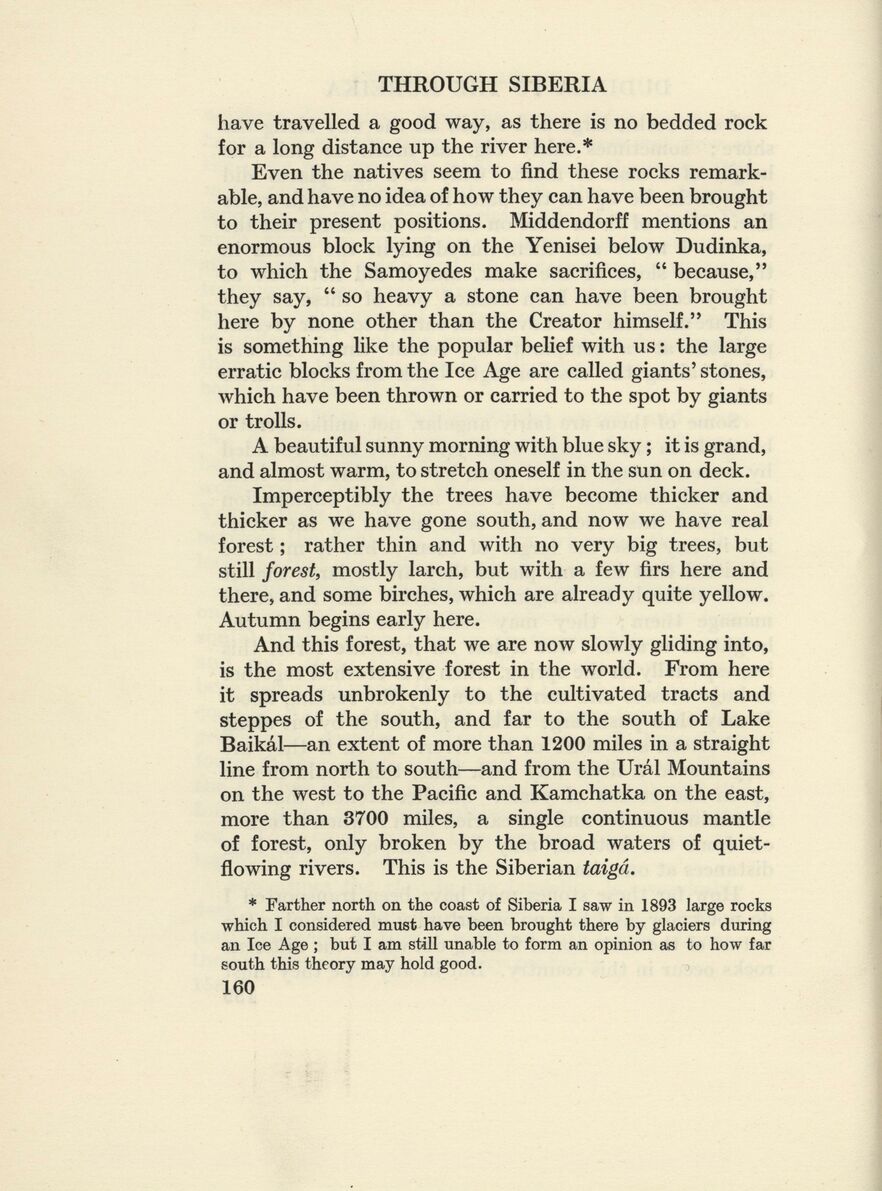
Full resolution (JPEG) - On this page / på denna sida - VIII. Dudinka to the Kureika

<< prev. page << föreg. sida << >> nästa sida >> next page >>
Below is the raw OCR text
from the above scanned image.
Do you see an error? Proofread the page now!
Här nedan syns maskintolkade texten från faksimilbilden ovan.
Ser du något fel? Korrekturläs sidan nu!
This page has never been proofread. / Denna sida har aldrig korrekturlästs.
THROUGH SIBERIA
160
have travelled a good way, as there is no bedded rock
for a long distance up the river here.*
Even the natives seem to find these rocks remark
able, and have no idea of how they can have been brought
to their present positions. Middendorff mentions an
enormous block lying on the Yenisei below Dudinka,
to which the Samoyedes make sacrifices, " because,"
they say, " so heavy a stone can have been brought
here by none other than the Creator himself." This
is something like the popular belief with us : the large
erratic blocks from the Ice Age are called giants’ stones,
which have been thrown or carried to the spot by giants
or trolls.
A beautiful sunny morning with blue sky ; it is grand,
and almost warm, to stretch oneself in the sun on deck.
Imperceptibly the trees have become thicker and
thicker as we have gone south, and now we have real
forest ; rather thin and with no very big trees, but
still forest, mostly larch, but with a few firs here and
there, and some birches, which are already quite yellow.
Autumn begins early here.
And this forest, that we are now slowly gliding into,
is the most extensive forest in the world. From here
it spreads unbrokenly to the cultivated tracts and
steppes of the south, and far to the south of Lake
Baikål—an extent of more than 1200 miles in a straight
line from north to south—and from the Ural Mountains
on the west to the Pacific and Kamchatka on the east,
more than 3700 miles, a single continuous mantle
of forest, only broken by the broad waters of quiet
flowing rivers. This is the Siberian taigd.
* Farther north on the coast of Siberia I saw in 1893 large rocks
which I considered must have been brought there by glaciers during
an Ice Age ; but I am still unable to form an opinion as to how far
south this theory may hold good. ,
<< prev. page << föreg. sida << >> nästa sida >> next page >>